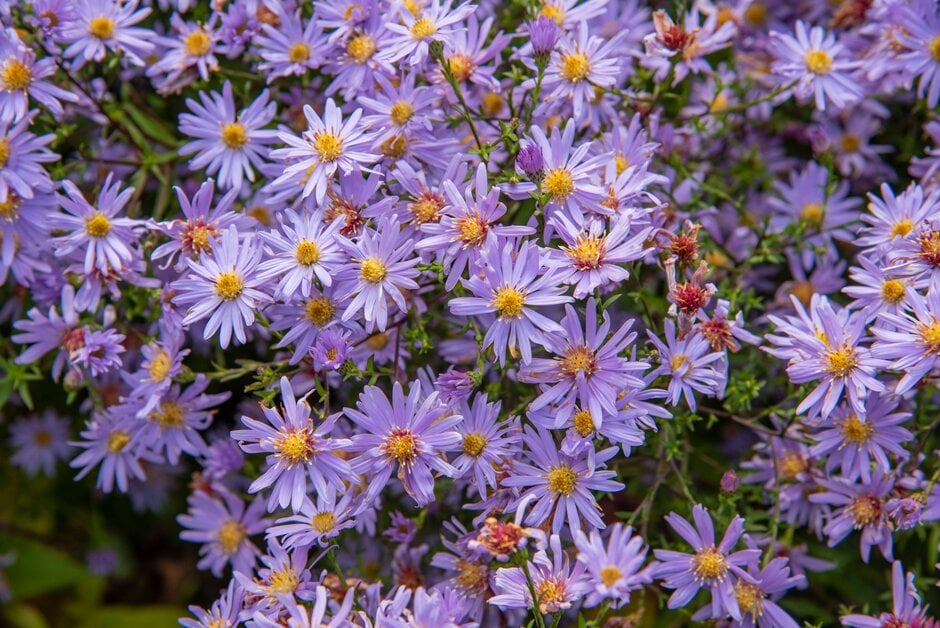Symphyotrichum 'Little Carlow' (_cordifolium_ hybrid)

aster 'Little Carlow'
A robust, clump-forming perennial, to around 1-1.2m tall, with mid-green, heart-shaped, toothed foliage. Masses of violet-blue, yellow-centred, daisy-like flowers to 2cm across, are produced in sprays from early autumn
Synonyms
Aster cordifolius 'Little Carlow'Aster 'Little Carlow'
see moreAster 'Little Carlow' (_cordifolius_ hybrid)
Size
Ultimate height
1–1.5 metresTime to ultimate height
2–5 yearsUltimate spread
0.1–0.5 metresGrowing conditions
Moisture
Moist but well–drained, Well–drainedpH
Acid, Alkaline, NeutralColour & scent
| Stem | Flower | Foliage | Fruit | |
| Spring | Green | |||
|---|---|---|---|---|
| Summer | Green | |||
| Autumn | Purple Blue Yellow | Green | ||
| Winter |
Position
- Full sun
- Partial shade
Aspect
West–facing or South–facing or East–facing
Exposure
Exposed or Sheltered Hardiness
H7Botanical details
- Family
- Asteraceae
- Native to GB / Ireland
- No
- Foliage
- Deciduous
- Habit
- Clump forming
- Genus
Symphyotrichum includes around 90 species of annuals, biennials and perennials, mostly spread through the Americas, that were formerly included within the genus Aster. Leaves are simple, lance-shaped and entire, but it is their daisy-like flowerheads that they are grown for; central disc florets are typically yellow, surrounded by strap-shaped ray florets in shades of pink, blue, purple or white
- Name status
Accepted
How to grow
Cultivation
Grow in moderately fertile, moist but well-drained soil in full sun or light shade. Stake tall plants in early spring, see staking perennials. See aster cultivation for further advice
Propagation
Propagate by division in spring
Suggested planting locations and garden types
- City and courtyard gardens
- Coastal
- Cottage and informal garden
- Prairie planting
- Wildlife gardens
- Gravel garden
- Cut flowers
- Flower borders and beds
Pruning
Cut down flowered stems to ground level once flowering has finished or leave the seedheads and stems in place for wildlife and winter interest
Pests
May be susceptible to leaf and bud eelworms, slugs and snails
Diseases
May be susceptible to Verticillium wilt, powdery mildews and grey moulds
Get involved
The Royal Horticultural Society is the UK’s leading gardening charity. We aim to enrich everyone’s life through plants, and make the UK a greener and more beautiful place.
